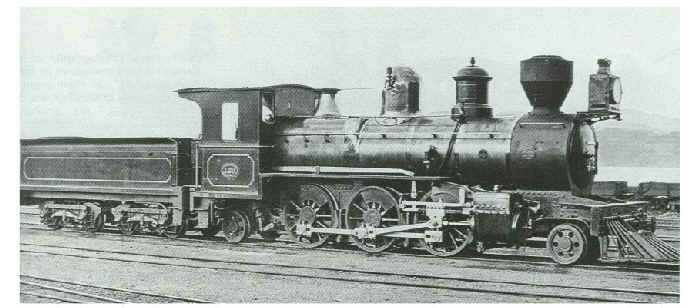Introduced: 1885
Number in Class: 13

Locomotive Specifications
|
|
| Engine Weight: 32.3 tons |
Tender Weight: 20.0 tons | Total Weight: 52.3 tons | Adhesive Weight: 23.9 tons |
| Length over Buffers: 48' 9" |
Total Wheelbase: 40' 9½" | Engine Wheelbase: 23' 0" | Coupled Wheelbase: 9' 6" |
| Tender Wheelbase: 12' 6" |
Driver Wheel Dia.: 49" | Cylinders HP: Two - 15" x 20" |
Cylinders LP: |
| Grate Area: 15.5 sq ft | Evaporative Area: 858 sq ft |
Superheated Area: | Working Pressure: 140 psig |
| Tractive Effort: 10928 lbs f |
Coal Capacity: 4.5 tons | Oil Capacity: | Water Capacity: 1300 gals |
| Remarks: The heavy increase in traffic by the early 1880s necessitated a design for a new class of passenger engine. Conceived as an enlarged version of the 2-4-2 "K" of 1877, but with six coupled wheels instead of four, an order was placed with Naysmith, Wilson. Unfortunately it took seven years for delivery to be made and then it was found that the engines were 5½ tons over-weight without the tender. As a result the NZR refused to accept them until the weight was pared down to an acceptable level. However by the time they were modified, these engines had been superceded by the American built "N" class of similar dimensions. The Wellington & Manawatu Railway Co. also orded three of these locomotives becoming their #'s 6, 7, & 8, these being fitted with an ornate Rogers-styled wooden cab with Gothic windows. When taken over by the NZR in 1908, they were taken into the "V" class. |